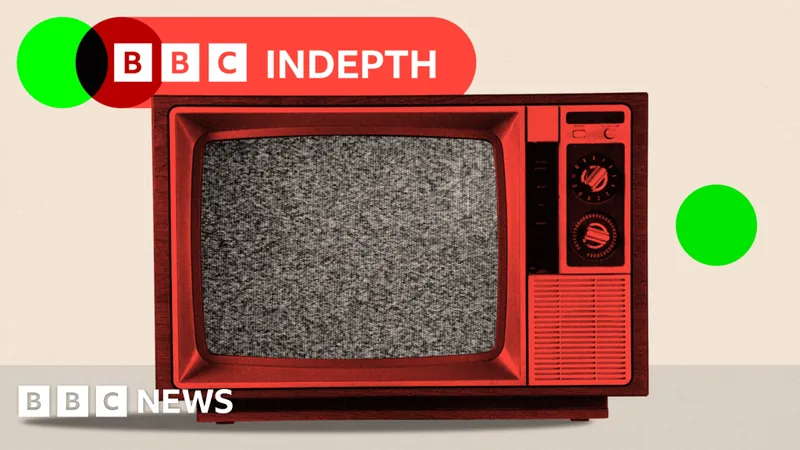
Revolutionizing Wireless Communication: The Breakthrough in Terahertz Waves and Quantum Materials
2025-01-21
Author: Michael
Introduction
In a groundbreaking development, a team of researchers from the University of Ottawa is transforming the landscape of wireless communication technologies. They have found innovative methods to significantly enhance frequency conversion of terahertz (THz) waves within unique graphene-based structures. This pioneering work opens the door to faster, more efficient communication and signal processing technologies that could reshape the future of connectivity.
Importance of Terahertz Waves
Terahertz waves, positioned in the far-infrared spectrum of electromagnetic radiation, are not only pivotal for wireless communication but also have the potential to revolutionize non-invasive imaging. These waves can penetrate opaque materials, making them invaluable for security applications and quality control in various industries, from pharmaceuticals to manufacturing.
Advancements in THz Nonlinear Optics
The advancements made in THz nonlinear optics are vital for the evolution of high-speed wireless communication, particularly for emerging 6G technologies. These advancements promise to drastically improve data transmission speeds and reliability, key factors needed to support the increasing demand for high-capacity networks globally.
Research Leadership
Led by Associate Professor Jean-Michel Ménard from uOttawa’s Faculty of Science, the research team is pioneering devices capable of shifting electromagnetic signals to higher oscillation frequencies. This innovation effectively creates a bridge between conventional gigahertz (GHz) electronics and the transformative realm of THz photonics.
Publication and Findings
The research findings, recently published in *Light: Science & Applications*, detail novel strategies to enhance THz nonlinearities using graphene-based devices. Professor Ménard highlighted the importance of these findings: "This research is a significant leap forward in improving the efficiency of THz frequency converters, which is crucial for multi-spectral THz applications and the impending 6G communication systems."
Collaborative Efforts
Alongside researchers Ali Maleki and Robert W. Boyd from uOttawa, the team collaborated with international experts Moritz B. Heindl and Georg Herink from the University of Bayreuth, Germany, and specialists from Iridian Spectral Technologies. Together, they have harnessed the unique optical properties of graphene—a groundbreaking two-dimensional quantum material composed of a single layer of carbon atoms. This revolutionary material not only acts as a platform for advanced signal processing but can also be seamlessly integrated into various devices.
Innovative Strategies
Previously, much of the research focused on fundamental interactions between THz light and graphene, often yielding minimal results because they were limited to examining single parameters. Ménard's team, however, has employed a combination of innovative strategies to amplify non-linear effects, thereby maximizing the unique properties of graphene.
Future Prospects
The implications of this research extend far beyond the lab. As society gears up for the advent of next-generation communication systems, the need for effective THz frequency conversion techniques becomes increasingly apparent. The goal is to ultimately create efficient, chip-integrated nonlinear THz signal converters that not only support future communication infrastructures but also enhance security protocols, improve imaging technologies, and refine quality control processes across industries.
Conclusion
As the world braces for a tech revolution, the quest for faster, more reliable wireless communication is more critical than ever. This research could very well be the catalyst that propels us into a new era of connectivity.









 Brasil (PT)
Brasil (PT)
 Canada (EN)
Canada (EN)
 Chile (ES)
Chile (ES)
 Česko (CS)
Česko (CS)
 대한민국 (KO)
대한민국 (KO)
 España (ES)
España (ES)
 France (FR)
France (FR)
 Hong Kong (EN)
Hong Kong (EN)
 Italia (IT)
Italia (IT)
 日本 (JA)
日本 (JA)
 Magyarország (HU)
Magyarország (HU)
 Norge (NO)
Norge (NO)
 Polska (PL)
Polska (PL)
 Schweiz (DE)
Schweiz (DE)
 Singapore (EN)
Singapore (EN)
 Sverige (SV)
Sverige (SV)
 Suomi (FI)
Suomi (FI)
 Türkiye (TR)
Türkiye (TR)
 الإمارات العربية المتحدة (AR)
الإمارات العربية المتحدة (AR)